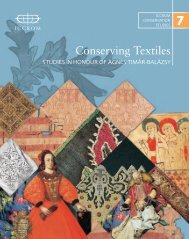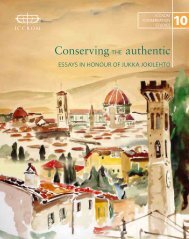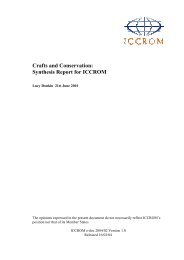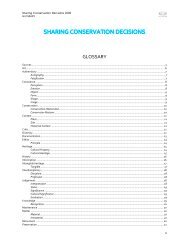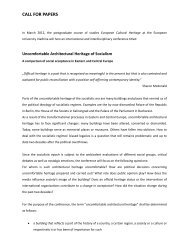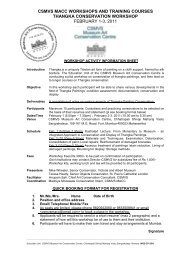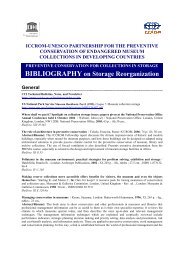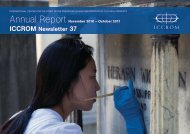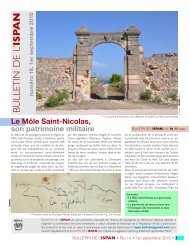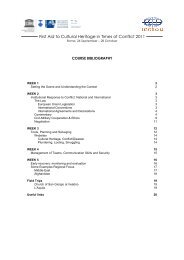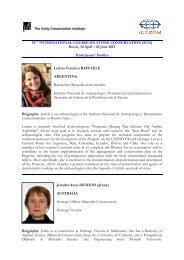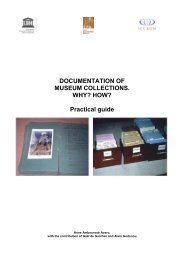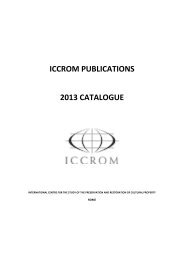part 1 - Iccrom
part 1 - Iccrom
part 1 - Iccrom
You also want an ePaper? Increase the reach of your titles
YUMPU automatically turns print PDFs into web optimized ePapers that Google loves.
MEASURING HERITAGE CONSERVATION PERFORMANCE<br />
6th International Seminar on Urban Conservation<br />
Until 2007 heritage protection and conservation<br />
was realized through proposals created by ordinances<br />
and decrees including:<br />
• Action programs: Revitalization of the<br />
Downtown 8 and the Program of Preservation,<br />
Conservation and Publication of<br />
Rosario’s Industrial Heritage. 9<br />
• Special plans for quarters declared of<br />
urban interest, in order to restore buildings<br />
that are representative of the quarter’s<br />
urban history, preserve urban morphology,<br />
and encourage private investment 10<br />
and the historic, urban and architectural<br />
area of Oroño Boulevard. 11<br />
• Declarations of Historical and Cultural<br />
Interest, such as the urban complex made<br />
up of the Central Argentino Railway<br />
Repair Shops. 12<br />
• Elaboration of the Central Area Inventory<br />
(Figure 3) 13 listing heritage buildings<br />
and sites declared of municipal interest to<br />
create a catalogue. Categories of heritage<br />
buildings, rides and urban sites are established,<br />
as well as their different degrees of<br />
protection.<br />
4. Planning Office’s<br />
Conservation Program<br />
Conservation of built heritage must be considered<br />
as a factor in identity and local development<br />
that plays a positive role in building the urban<br />
landscape. However, urban dynamics themselves<br />
jeopardize built heritage, since building a city on<br />
an existing one implies substitutions that, in many<br />
cases, act against urban memory. The introductory<br />
section of the Urban and Architectural Heritage<br />
Conservation and Rehabilitation Program in the<br />
local government’s website indicates the nature of<br />
the urban heritage conservation policy:<br />
“[…] this Program encourages a city project<br />
where urban interventions, whether private or<br />
public, introduce restoration and enhancement<br />
of urban and architectural heritage as a driving<br />
force to promote public spaces, and recreate<br />
diminished, messy or ‘vague’ areas […] The<br />
project points to restore heritage buildings and<br />
sites, in order to highlight those features that go<br />
unnoticed to the average person, to strengthen<br />
the local identity and to boost the sector’s economy<br />
[development factor].”<br />
Figure 3. Central Area Inventory (Source: Historical, Urban and Architectural Conservation Program; Planning<br />
Office of the Municipality of Rosario).<br />
Rainero, C. 2012. How to register memory? Documentation, recording, archiving and preservation of intangible cultural heritage in<br />
Venezuela. In Zancheti, S. M. & K. Similä, eds. Measuring heritage conservation performance, pp. 59-66. Rome, ICCROM.<br />
61



